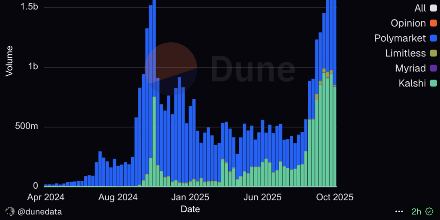Crypto and Equity Market Synergy: Navigating the Fed's Dovish Shift and Institutional Crypto Adoption
- Fed's 2025 rate-cut pivot lowers holding costs for Bitcoin, driving institutional adoption as inflation hedge. - MicroStrategy, Harvard, and CEA Industries allocate billions to Bitcoin/BNB, treating crypto as core corporate reserves. - Dovish policy and crypto synergy create flywheel: rate cuts → increased adoption → upward price pressure. - Investors advised to balance crypto exposure with ETFs/bonds, as volatility risks persist despite regulatory clarity.
The Federal Reserve's cautious pivot toward rate cuts in 2025 has ignited a seismic shift in global capital markets, creating a unique inflection point for investors. With the FOMC signaling one to two 25-basis-point reductions by year-end, the interplay between monetary policy and institutional-grade crypto adoption is reshaping the landscape of asset allocation. This article dissects how these forces are converging to create a tailwind for digital assets and offers actionable strategies for investors seeking to bridge traditional and crypto markets.
The Fed's Dovish Pivot: A Catalyst for Capital Reallocation
The July 2025 FOMC minutes underscored a measured approach to rate cuts, driven by tepid GDP growth, elevated inflation (2.7% core PCE), and trade policy uncertainties. While the labor market remains robust (4.1% unemployment), the Fed's emphasis on maintaining “well-anchored inflation expectations” has led to a dovish tilt. This shift has directly impacted capital flows: lower interest rates reduce the opportunity cost of holding non-yielding assets like Bitcoin , while traditional fixed-income yields shrink, pushing investors toward alternatives.
The market's anticipation of rate cuts—reflected in the 89% probability priced in for September 2025—has already driven Bitcoin to an all-time high of $117,000. This surge is not speculative but strategic: institutional investors are leveraging crypto as a hedge against inflation and currency devaluation, a trend amplified by regulatory clarity (e.g., the CLARITY Act and ERISA revisions).
Institutional Crypto Adoption: From Niche to Mainstream
Institutional-grade crypto treasury strategies have evolved from experimental to foundational. Companies like MicroStrategy, Harvard University, and CEA Industries are now allocating billions to Bitcoin and BNB , treating digital assets as a core component of their balance sheets. For example, CEA Industries' $500 million private placement to build the largest corporate BNB treasury—backed by Pantera Capital and Arche Capital—signals a new era of legitimacy for crypto as a corporate reserve asset.
Beyond Bitcoin, institutional strategies are diversifying into utility-driven altcoins. DeFi Development Corp. (NASDAQ: DFDV) and Mill City Ventures III (NASDAQ: MCVT) are accumulating Solana (SOL) and Sui (SUI) tokens, respectively, while generating staking income. These moves highlight crypto's transition from speculative trading to structured, income-generating portfolios.
Synergy Between Fed Policy and Crypto: A Strategic Framework
The Fed's dovish stance and institutional adoption are not isolated phenomena—they are mutually reinforcing. Lower rates reduce the cost of capital, enabling firms to fund crypto acquisitions and staking operations. Conversely, crypto's role as an inflation hedge becomes more critical as the Fed grapples with tariff-driven price pressures. This synergy creates a flywheel effect: rate cuts → lower opportunity costs → increased crypto adoption → higher demand for digital assets → upward price pressure.
However, volatility remains a challenge. Historical patterns show crypto markets often experience “buy the rumor, sell the news” corrections after Fed announcements. On-chain metrics like Bitcoin's RSI and MVRV ratio hitting overbought levels in late 2025 underscore this risk. Investors must balance optimism with hedging strategies, such as pairing crypto allocations with Treasury bonds or inverse ETFs.
Actionable Insights for Investors
- Allocate to Regulated Crypto Vehicles: U.S. spot Bitcoin ETFs like IBIT offer a low-friction entry point, with $132.5 billion in AUM by Q2 2025. These funds provide liquidity, transparency, and regulatory alignment.
- Diversify Into Institutional-Grade Altcoins: Companies like DFDV and MCVT are building treasuries in SOL and SUI, offering exposure to high-growth, utility-driven ecosystems.
- Hedge Against Macro Volatility: Use inverse ETFs (e.g., BIT) or Treasury bonds to offset potential downturns in crypto markets.
- Monitor Fed Data-Dependent Signals: The Fed's September decision will hinge on inflation and labor data. Positioning for dovish outcomes while preparing for hawkish surprises is key.
Conclusion: Bridging the Divide
The Fed's dovish shift and institutional crypto adoption are not just reshaping asset classes—they are redefining the rules of portfolio construction. For investors, the path forward lies in embracing this synergy: leveraging rate cuts to fund crypto allocations, diversifying into utility-driven tokens, and hedging against macroeconomic uncertainties. As the Fed's September decision approaches, the challenge is to remain agile, strategic, and informed in a rapidly evolving market.
The future of finance is no longer confined to traditional or digital—it is a hybrid landscape where both thrive together.
Disclaimer: The content of this article solely reflects the author's opinion and does not represent the platform in any capacity. This article is not intended to serve as a reference for making investment decisions.
You may also like
OracleX Global Public Beta: Restructuring Prediction Market Incentive Mechanisms with "Proof of Behavior Contribution"
OracleX is a decentralized prediction platform based on the POC protocol. It addresses pain points in the prediction market through a dual-token model and a contribution reward mechanism, aiming to build a collective intelligence decision-making ecosystem. Summary generated by Mars AI The content of this summary is produced by the Mars AI model, and its accuracy and completeness are still being iteratively improved.

Bitcoin is not "digital gold"—it is the global base currency of the AI era
The article refutes the argument that bitcoin will be replaced, highlighting bitcoin's unique value as a protocol layer, including its network effects, immutability, and potential as a global settlement layer. It also explores new opportunities for bitcoin in the AI era. Summary generated by Mars AI. This summary was produced by the Mars AI model, and the accuracy and completeness of its content are still being iteratively improved.

Bitcoin 2022 bear market correlation hits 98% as ETFs add $220M

Fed rate-cut bets surge: Can Bitcoin finally break $91K to go higher?
